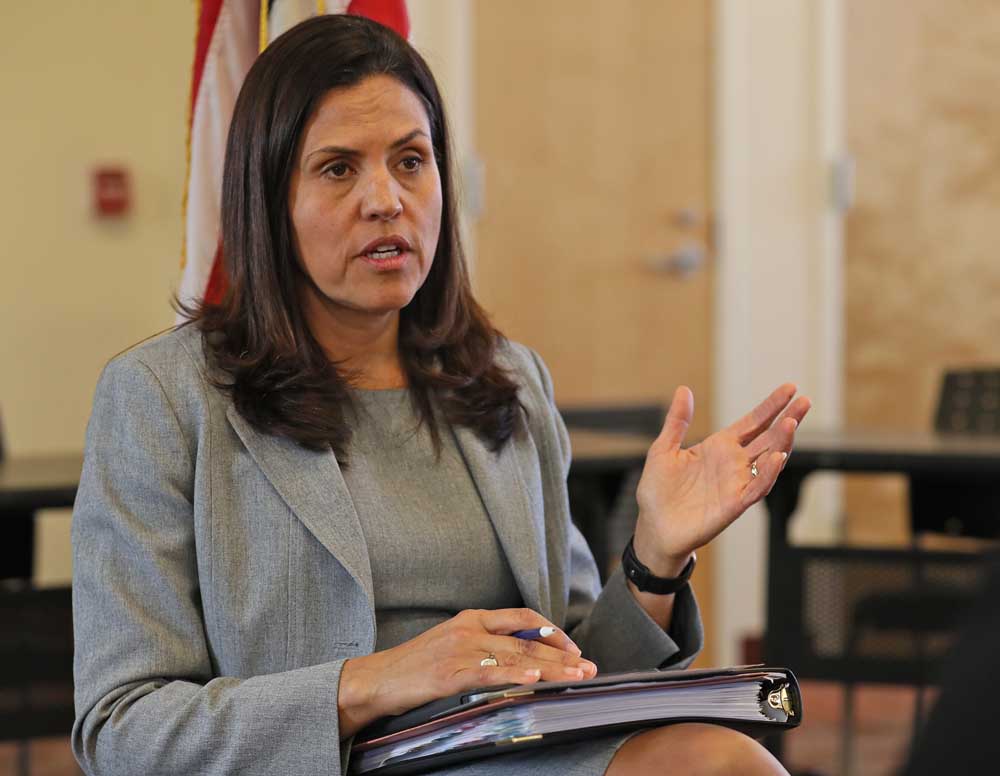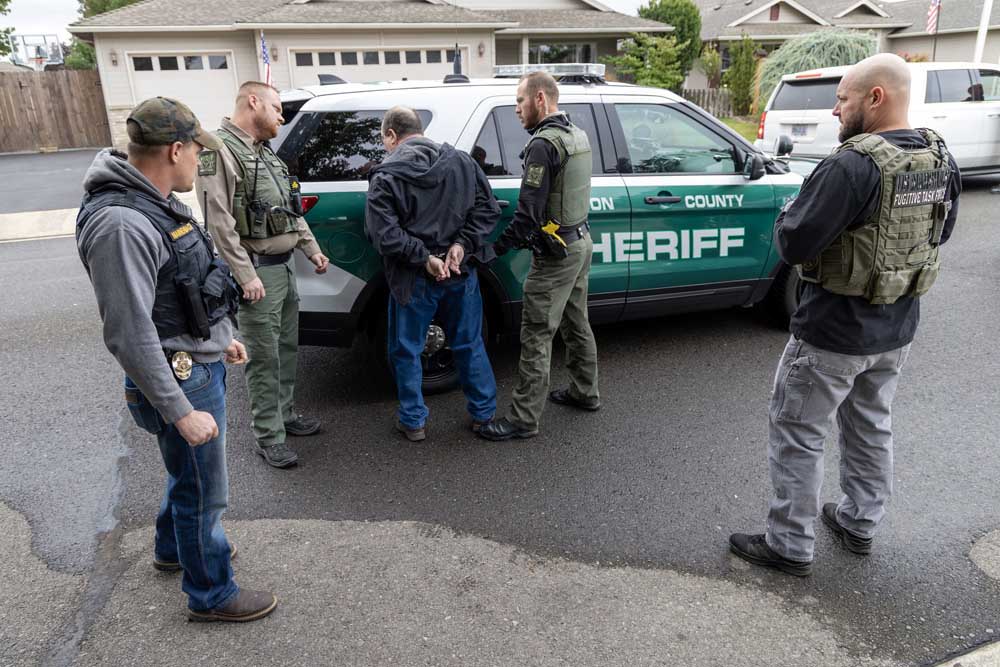VA deputy secretary visits White City, vows to confront troubled health record system
Published 3:30 pm Wednesday, November 1, 2023

- Tanya Bradsher, deputy secretary of Veterans Affairs, answers questions at the White City VA Rehabilitation Center & Clinics Tuesday.
After only six weeks on the job as deputy secretary of the U.S. Department of Veterans Affairs, Tanya Bradsher spent Tuesday in White City and vowed to fix or halt implementation of the VA’s troubled electronic health record system.
The new system was initiated in 2018 as a pilot program for five veteran health care facilities, including the White City VA Rehabilitation Center & Clinics, and has been riddled with issues ranging from access delays to incompatibility between various government and public-sector health care systems.
Bradsher, a combat veteran who spent two decades in the U.S. Army, toured the White City VA and held a town hall for health care workers and facility leadership to discuss ongoing concerns.
“Our clinicians deserve a health care record that works for them, and right now we are not going to move forward with any other sites,” Bradsher said during a press meeting Tuesday. “All other sites are in a holding pattern until we can get the record up and running in a way that our clinicians can operate in a way to be able to take care of our veterans.”
In one exception, Bradsher said the new system would be deployed in March at Captain James A. Lovell Federal Health Care Center in North Chicago, Illinois, due to its status as a joint base with the U.S. Department of Defense.
Dubbed the “Cerner system,” it is being hosted through a partnership with government officials and Oracle Cerner. It was launched in 2018 with plans for full implementation within 10 years.
One of five facilities under the pilot program, the White City VA was brought online with the new system in July 2021. At the halfway mark for the 10-year transition, the program has faced significant challenges resulting in a number of pauses and restarts over the past two years.
Bradsher, who was sworn in Sept. 20, said resolving issues with the record system is a top priority for Veterans Affairs. In addition to visiting the White City facility, she toured and met with officials at facilities in Spokane and Walla Walla, Washington. She was set to spend Wednesday in Roseburg and will complete her tour of the five centers Thursday, visiting a facility in Columbus, Ohio.
“We are currently in a reset. We’re in five locations, and we are working diligently, together, figuring out the challenges,” she said.
“Part of what I’m doing is a listening campaign to see what the challenges are,” Bradsher continued. “I’ve met with clinicians. I’ve met veterans to talk about the challenges that they’ve had. … Our focus is to just continue to listen and take the information back to D.C. and work with contractors within the VA to figure out how we’re going to help our clinicians be able to take care of our veterans.”
White City VA Chief of Staff Christina Cellura said health care workers had been dedicated to figuring out “work arounds” for the new system to ensure veterans receive needed care despite lengthier visits and system-related delays. Cellura said she was grateful to Bradsher for taking time to hear from health care workers and leaders at the Southern Oregon site.
“She’s been very gracious in spending most of the day with us and has been really open to hearing feedback,” Cellura said. “She has assured us that she’s going to take our concerns forward when she gets back to D.C. and do her best to make this a priority.”
Cellura highlighted some of the problems with the White City VA health record system. “The time it takes to schedule our veterans is taking longer than we would like it to take. Medication reconciliation is not as timely. … Definitely, we are not able to see as many veterans as we initially were, before we went live with this new system,” she said.
In addition to discussing issues with the electronic health care record, Bradsher touched on the importance of addressing veteran suicide rates. Statistics report 22 veteran suicides per day — more than 50% higher than the non-veteran population — though some statistics indicate the number could be even higher.
Veterans Affairs hosted a “Buddy Check” campaign in October that encourages veterans and veteran advocates to regularly check on veterans who might be struggling with mental health. Bradsher said reducing veteran suicide rates is another focus of the department.
“It’s a whole effort, and it needs to include private partners, the community, as well as our VA clinicians … a complete team effort,” she said.
Bradsher noted that her department released $52 million in grant funding last month for veteran support services related to mental health and is promoting the use of dialing 988 for individuals in crisis. Veterans are able to press 1 for immediate help.
“We also have a program where any veteran who is in crisis can go to any emergency room, and we will pick up that bill,” Bradsher said. “So if we have any veterans out there who are struggling, and you don’t have a VA nearby, you can go to the nearest ER and they will take care of you.”
She added: “Any veteran suicide is one too many.”
For more information on resources for veterans in crisis, see VeteransCrisisLine.net (or text 838255).
Data on the new VA electronic health record is available at digital.va.gov/ehr-modernization/resources/fact-sheets






